You know you want to get your hands on one of the best rowing machines for your home gym. You’ll get solid full-body cardio workouts without any jostling of your joints. But at what cost (literally)?
At BarBend, we know a little something about rowing machines. We’ve tested two dozen different rowers, and have navigated plenty of these big purchases. There’s more than one answer to the question: “How much do rowing machines cost?” We’ll walk (erm, row?) you through all the different price points you’ll encounter — the goods, the bads, and everything in between.
How Much Do Rowing Machines Cost?
There are several different types of rowing machines on the market, and their price is influenced by a wide variety of factors. These factors can range from the durability of the rower to its resistance type, along with its functionality with respect to replicating a true-to-life, on-the-water rowing experience.
For example, if you’re looking for a space-conscious, budget-friendly option, there are compact rowers with hydraulic resistance available through Sunny Health & Fitness that will only set you back $150 or less. However, the low-price segment of the rowing machine market is best exemplified by manual magnetic rowers. A typical magnetic rowing machine will cost you about $250, and nearly all of the best rowing machines under $500 use magnetic resistance.
If you can opt for a rower with a slightly steeper price tag, you can snag a water rowing machine that offers authentic water resistance via water stored in a water tank for a more immersive experience. They also typically offer ergonomic seating, and can stand completely vertical for easy storage. Rowing machines like this will cost you between $400 and $800.
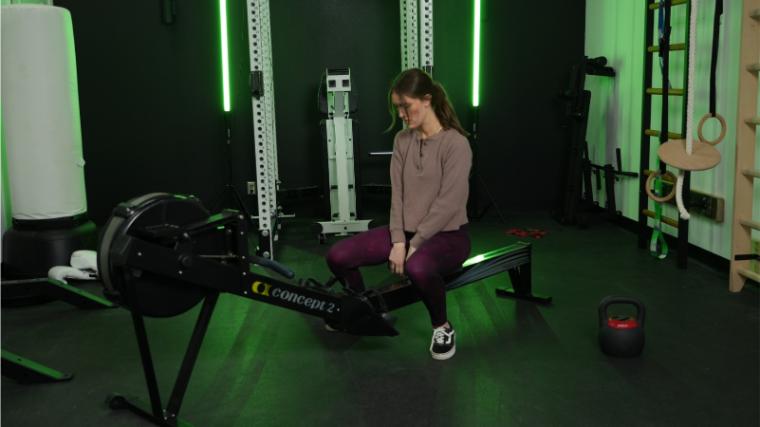
The higher end of the moderate price range for rowing machines is typified by the Concept2 RowErg. Often cited among the best rowing machines in the world — and certainly the most famous, as evidenced by its dominance at the CrossFit Games — the Concept2 offers air resistance through a flywheel system. Depending on the model you select, a new Concept2 costs between $900 and $1,600.
If you’re less than enthused about paying full price, there are often discounts you can unlock by signing up for the manufacturers’ mailing lists. For example, NordicTrack will give you a $50 discount off products $999 or higher for signing up for their mailing list, and Sunny Health & Fitness will give you a five-percent discount for doing the same. Echelon Row and the Hydrow Wave Rower will similarly shave $100 off the price of their products in exchange for some basic contact info.
Read our full Echelon Row Review.
Types of Rowing Machines
All the rowing machines out there distinguish themselves through their offerings of different features. These differences include the type of resistance the rowers utilize and how many different levels of resistance they include. Some rowers are also technologically advanced, offering Bluetooth connectivity and on-demand workout programs if you prefer workouts led by a personal trainer.

One of our BarBend experts, Amanda Capritto CPT, CSNC, CPS, has chimed in to help you identify all of the rowing machine component options, and then sort through them to select the best rower for your own home gym.
Magnetic Rowing Machine
The best magnetic rowing machines are some of the simplest machines for rowing rookies to understand. Like exercise bikes, the resistance level of a magnetic rower can be set at a fixed level. This means the resistance is always consistent, and the pull on the handle remains smooth and predictable throughout each workout.
Air Resistance Rowing Machine
Rowing machines that rely on air resistance have flywheels that speed up the harder you pull, with resistance that also feels increasingly stronger while you’re pulling (with your arms) and pushing (with your legs) ever harder. This makes the best air rowing machines a favorite of competitive rowers who need to replicate the feel of the real thing, along with CrossFitters and fans of high-intensity interval training (HIIT) workouts. These machines automatically increase the challenge level based on user output.
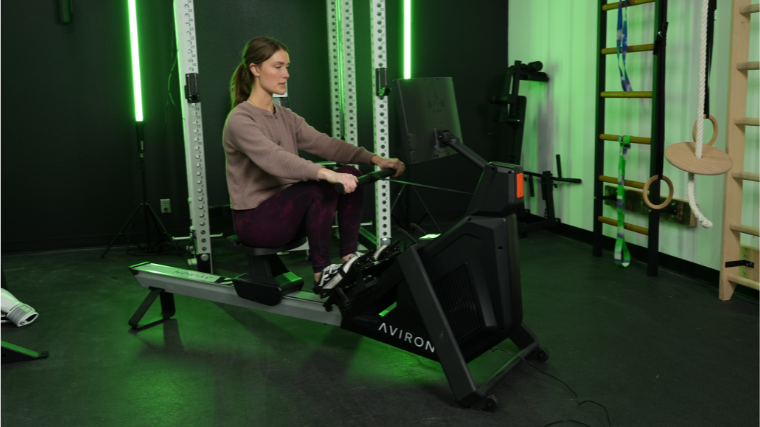
Lauren Keary, former collegiate rower and a member of BarBend’s editorial team, explains: “Most professional rowers train with air rowers like the Concept2. Though magnetic rowers offer similar capabilities, they’re typically more expensive (due to how quiet they are) and many can include streaming or tech additions that increase that price tag further.”
Read our full Concept2 RowErg Review.
Water Rowing Machine
A water rowing machine goes further than any other rower to recapture the natural essence of rowing along an aquatic path. This comes from a clear tank filled with actual water to supply the resistance. This makes the feeling of resistance very similar to that of being on open water, incorporating the original source of resistance into an activity that has a distinctly watery origin.
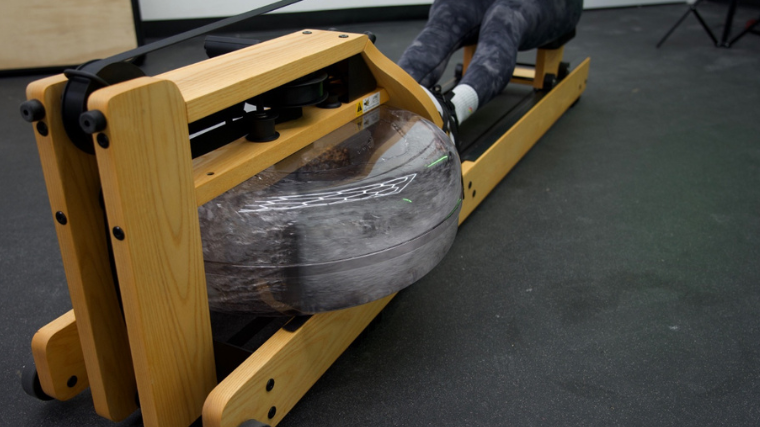
Read our full WaterRower Review.
Hydraulic Rowing Machine
Hydraulic rowing machines are usually called upon to offer the basic functionality and movement pattern of rowing with a significant departure from the feel of on-the-water rowing. Most of these machines rely on a hinge pattern that begins with the pull of the handlebars, which brings the handles along a fixed path. While it may not feel like traditional rowing, it’s still working the same muscles in a similar pattern.
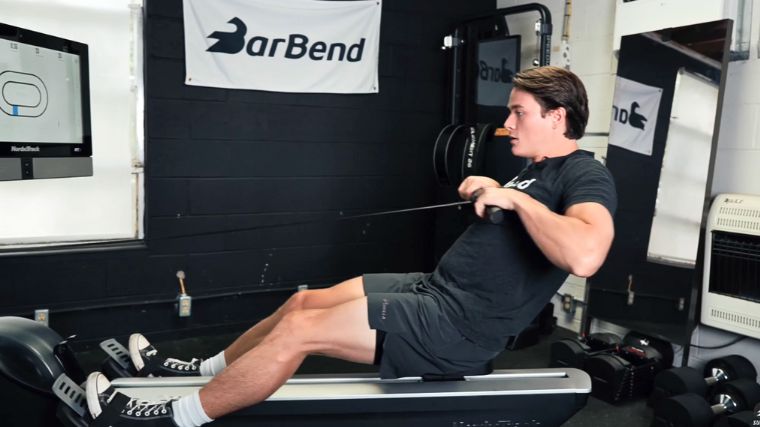
[Related: Muscles Worked by the Rowing Machine]
Hybrid Rowing Machine
A hybrid rowing machine simply combines the form and function of multiple resistance forms — usually air and magnetic. This can create a best-of-both-worlds scenario, allowing users to gain some of the moment-to-moment variability of the air resistance while also adding the precise load resistance supplied by magnetic machines.
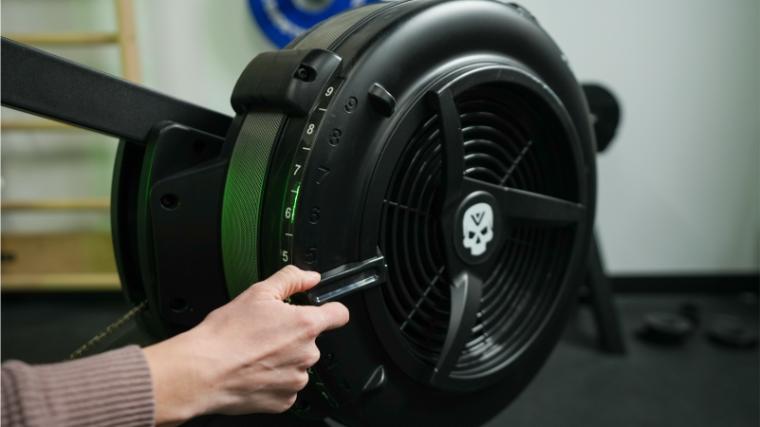
Elliptical Rowing Machine
While the resistance of rowing is ordinarily delivered in a single direction, from front to back, an elliptical rower can also give you resistance from back to front. This is accomplished by altering the rotational direction, thereby supplying resistance as you return to what is usually the starting position. This makes it a highly atypical training device that prioritizes maximum muscle engagement over rowing authenticity.
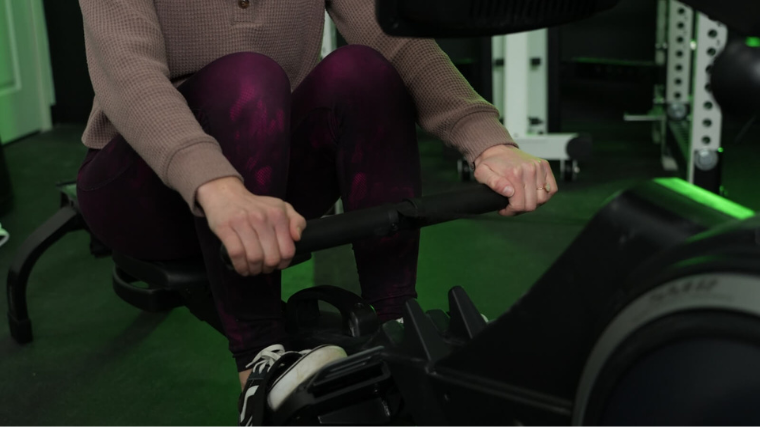
How to Choose a Rowing Machine
Do you want a foldable rowing machine that can fit into small spaces? Or, how about a smart rower with built-in iFit training programs and a handy heart rate monitor? Plenty of different factors can change the nature of your rowing experience, so you’ll want to decide in advance what you can and can’t live without before choosing a rowing machine.
Price
Most rowing machines will range in price from $100 to $2,000. Fortunately, there are plenty of attractive options available south of $1,000, especially if your goal is purely to achieve a cardio workout that trains multiple muscle groups. But if you’re a CrossFitter or a bit of a rowing purist, you’ll probably have to fork over $900 or more for a Concept2 RowErg.
Environmental Impact & Labor Practices
If you’re hoping to conserve electricity, nearly all air rowers and water rowers rely on the movement of the rower to power the performance monitor. This means that many indoor rowing machines don’t need to be plugged in, so externally powering the rower is not a consideration in those cases. And if you prefer to cut down on the creation of plastic, many water-resistance rowers use bases made of wood. You can also buy used machines from places like Craigslist if you prefer to reduce environmental shipping and production impacts.
You can also check out a company’s labor and production practices and transparency to see if they’re an ethical match for you and your spending preferences.
Adjustability & Size
There is far more to a rower than its ability to deliver a quality workout. You may need a rower that can adapt to the different sizes of many people within the same household. On the other hand, you may need a rower that can discreetly fold up and essentially disappear when it’s not in use. In cases like these, choosing a rower might involve identifying the rower that can provide you with the best workout possible while also performing another equally vital function.
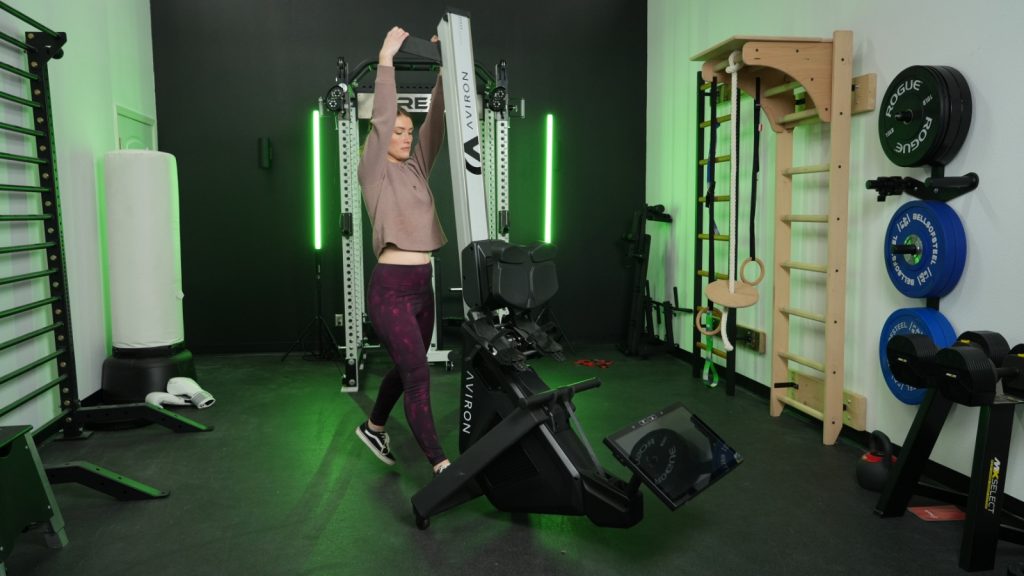
“Size, weight, and portability are important, as you’ll need to ensure the machine will fit in your space and it’s relatively easy to move if you won’t be able to leave it stationary,” says BarBend equipment expert Amanda Capritto CPT. “Tall people should check the overall length of the rower, but more importantly, the length of the slide rail, to determine whether they’ll be able to achieve full range of motion. It’s common for budget rowing machines to be shorter, which makes them unideal for tall individuals.”
Noise Level
Some rowing machines tend to be on the noisy side, although this can be blown out of proportion in some reviews. While rowers that use a flywheel tend to generate a fair amount of noise — whether they use air or water resistance — the noise level is likely no greater than the sound of feet pounding on a treadmill. Still, if keeping the volume level low is a major consideration, magnetic and hydraulic rowers are quieter than virtually all other cardio machines.
Warranty
Like other cardio machines, the warranties of rowing machines are dictated by the company (and where you buy them) and can vary significantly in form. Warranties may apply to a rowing machine as a whole, or to individual parts of a machine. For example, a Concept2 RowErg has a 2-year warranty on the moving parts of the machine and the monitor and a 5-year warranty on the frame.
Similarly, the Ergatta Rower has a 1-year warranty on the touchscreen, a 3-year warranty on the handle, strap, and cabling, and a 5-year warranty on the wooden frame. On the high end, the NordicTrack and Aviron interactive rowers both have 10-year warranties on their frames, with warranties of two years or fewer on the rowers’ moving parts.
Read our NordicTrack RW900 Review.
Resistance
The resistance type you select for your rower is quite possibly the most important factor in making a decision. Air rowers are often considered the most reliable devices for replicating the feel and effect of rowing on the water. Therefore, if you want your improvements on an indoor rower to translate to the water, air- or water-resistance models may be your preference.

On the other hand, if the objective is to pull against a smooth, stable resistance, magnetic rowers may offer the most desirable form of resistance for you.
Programming & Tech
Rowing machines can vary widely in how sophisticated their technology is. The performance monitors of standard Concept2 rowers tend to be very basic, whereas some modern rowers offer LCD monitors with Bluetooth compatibility. Several even provide a device holder so that you can filter your workout through assorted training apps you can download on your smartphone.
“You can choose between a smart rowing machine and a ‘not smart’ one, meaning one that has a fancy screen that streams stuff or one that has a simple LCD screen that reads out basic metrics,” explains BarBend expert Amanda Capritto, CPT. “Smart rowing machines are more expensive and usually require a monthly subscription to access full functionality.”
Flywheel Type
While the flywheel of a rower is usually invisible, or at least less visible than it is in most exercise bikes, you may be totally unaware of the mechanism at work that provides the resistance during your rowing workout. In nearly all cases, there is a flywheel being spun to provide resistance, and the sort of resistance offered can significantly affect the feel of your workout.

“The flywheel mechanism dictates the rower type: Air rowers use fan flywheels; water rowers use fan flywheels against the resistance of water in a tank; magnetic rowers use electromagnetic resistance; and hydraulic rowers, which are less expensive but functionally limited compared to the other three types, use hydraulic cylinders in the handles to create resistance,” Capritto says.
Brand
In some ways, the brand of rowing machine may be far more significant to rowers than any other specific brand of cardio machine. This is because for many competitive rowers — or for people who want to compete in the most sophisticated indoor rowing competitions — the Concept2 is the only rowing machine that matters.
In other cases, specific rowing brands — like the Hydrow Rower — display famous waterways on their monitors to make you feel like you’re immersed in a watery setting. If you like your workouts to be visually stimulating, this sort of feature may help youto receive an efficient cardio workout — and visual journey — for your efforts.
Read our full Hydrow Rower Review.
FAQs: How Much Do Rowing Machines Cost?
How much should I spend on a rowing machine?
Generally speaking, the amount of money you spend on a rowing machine is dictated by the brand, resistance, and features of the rower. A high-quality rower with magnetic resistance and zero gaudy features can be acquired on Amazon for around $250. Conversely, a Peloton rower with electronic resistance and a pivoting HD touchscreen can cost $3,000 or more.
Can you lose belly fat on a rowing machine?
Even the best rowing machine workouts do not specifically target or burn away belly fat. However, as a cardiovascular exercise, rowing can contribute to the burning of calories, which helps contribute to a caloric deficit and ultimately may lead to the reduction of fat. Therefore, rowing can help contribute to a reduction of belly fat, albeit in an indirect way.
Are rowing machines worth it?
Whether or not rowing machines are worth the investment depends on your specific goals. As far as cardio fitness equipment is concerned, rowing machines involve many of the muscles in the upper body while also being primarily a lower body movement. This makes the rower an excellent complement to strength training, with benefits that are within reach even at relatively low price points.
Is 30 minutes of rowing a day enough?
Studies show that 30 or less of daily rowing is still sufficient to improve your fitness level. Just 20 minutes of rowing at 40 to 60% effort level five days a week was sufficient to improve grip strength, back strength, trunk flexion, and vertical jump in test subjects. (1) Even national-level rowers were able to make significant improvements using high-intensity or sprint-interval training methods requiring well under 30 minutes of daily rowing. (2)
References
- Shin KY, Choi EH, Lim JY, Cho AR, Lim YH. Effects of Indoor Rowing Exercise on the Body Composition and the Scoliosis of Visually Impaired People: A Preliminary Study. Ann Rehabil Med. 2015 Aug;39(4):592-8. doi: 10.5535/arm.2015.39.4.592. Epub 2015 Aug 25. PMID: 26361596; PMCID: PMC4564707.
- Turner KJ, Pyne DB, Périard JD, Rice AJ. High-Intensity Interval Training and Sprint-Interval Training in National-Level Rowers. Front Physiol. 2021 Dec 14;12:803430. doi: 10.3389/fphys.2021.803430. PMID: 34970160; PMCID: PMC8712637.